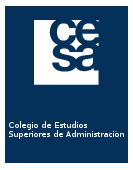Artículos y borradores de administración – Working papers: Envíos recientes
Mostrando ítems 21-40 de 198
-
Family firms and financial performance : the cost of growing
(Elsevier BV, 2012-12)This study examines the relationship between financial performance and family involvement for 523 listed and non-listed Colombian firms over 1996–2006. Using a detailed database and performing several panel data regression ... -
Revisión de la literatura de empresas familiares : una perspectiva financiera
(Consejo Latinoamericano de Escuelas de Administración, 2011)Las empresas familiares son la estructura organizacional más difundida en el mundo inclusive en las economías más desarrolladas. Por ello, siempre han sido un objeto de estudio interesante para las distintas áreas de la ... -
Desarrollo de marca país y turismo. El caso de estudio de México
(Centro de Investigaciones y Estudios Turísticos, 2013)La estrategia de marca país se ha convertido en un propósito de los gobiernos por mejorar su reputación en mercados internacionales. El resultado final de aplicar la estrategia de marca país no es sólo enmendar la imagen ... -
Numerical determination of hitting time distributions from their Laplace transforms : simple cases
(Elsevier BV, 2014-09-15)An important problem in probabilistic modeling consists of the determination of the distribution function of a positive random variable, in particular a hitting time, from its Laplace transform. In this note we use two ... -
Personalized education and its role in reducing dropout student rates in Colombia: The CESA case
(EuroJournals, 2014-03)In Colombia the dropout rate in 2013 among business, economics and accounting schools was 53.65% at the national level. Is within this context, that the Colegio de Estudios Superiores de Administración (CESA) reported one ... -
Science and technology policy in Colombia : a comparative review
(EuroJournals, 2014)The purpose of the present paper is to assess the current situation of the science and technology system in Colombia from a comparative perspective of quality indicators in Latin America and the Caribbean (LAC). We analyze ... -
Empresariado en Colombia : perspectiva histórica y regional
(Routledge, 2014) -
Testing contagion with propensity matching estimators : a three country empirical example
(EuroJournals, 2014)We analyse the effect of the Global Financial Crisis (GFC) on portfolios of USD denominated sovereign bonds. We use propensity matching estimators in order to measure the average difference in the volatility of sovereign ... -
Family involvement and dividend policy in closely held firms
(Sage Publications Inc, 2014-06-11)This article examines the effects of family involvement on dividend policy in closely held firms that face agency problems involving majority?minority shareholders. We argue that minority shareholders press for dividends ... -
Internet-based corporate disclosure and market value : evidence from Latin America
(Elsevier BV, 2013-12)We examine the relationship between an Internet-based corporate disclosure index and firm value in the seven largest stock markets of Latin America. We find, after controlling for firms' characteristics, industry and country ... -
Family firms and debt : risk aversion versus risk of losing control
(Elsevier Inc., 2013-11)This study examines the effect of family management, ownership, and control on capital structure for 523 Colombian firms between 1996 and 2006. The study finds that debt levels tend to be lower for younger firms when the ... -
A relationship between the ordinary maximum entropy method and the method of maximum entropy in the mean
(MDPI AG, 2014-02-24)There are two entropy-based methods to deal with linear inverse problems, which we shall call the ordinary method of maximum entropy (OME) and the method of maximum entropy in the mean (MEM). Not only does MEM use OME as ... -
Financial autarchy as contagion prevention : the case of colombian pension funds
(Routledge, 2014-12-05)Regulations restricting investment by pension funds in high-risk and foreign assets may quarantine member accounts from contagious transmissions during financial crises. We analyze contagion from U.S. equity markets to ... -
Comment on article by Windle and Carvalho
(International Society for Bayesian Analysis, 2014)The article by Windle and Carvalho introduces a fast update procedure for covariance matrices through the introduction of higher frequency sources of information for the underlying process, demonstrated with a financial ... -
Governance of family firms
(Annual Reviews, 2015)We review what the financial economics literature has to say about the unique ways in which the following three classic agency problems manifest themselves in family firms: (a) shareholders versus managers, (b) controlling ... -
A Bayesian Beta Markov Random Field calibration of the term structure of implied risk neutral densities
(International Society for Bayesian Analysis, 2015-12)We build on the derivative pricing calibration literature, and propose a more general calibration model for implied risk neutral densities. Our model allows for the joint calibration of a set of densities at different ... -
The role of family involvement on CEO turnover : evidence from colombian family firms
(Wiley-Blackwell Publishing Ltd, 2015)Manuscript Type Empirical Research Question/Issue We analyze CEO turnover in closely held firms with some level of ownership dispersion in a context of low investor protection. In particular, we examine the impact of ... -
Application of the method of maximum entropy in the mean to classification problems
(Elsevier BV, 2015-11-01)In this note we propose an application of the method of maximum entropy in the mean to solve a class of inverse problems comprising classification problems and feasibility problems appearing in optimization. Such problems ... -
A test of the market efficiency of the Integrated Latin American Market (MILA) index in relation to changes in the price of oil
(Econjournals, 2015-04-16)The purpose of this paper is to study if there is a Granger causality relationship between the price of oil and the prices of the stocks that compose the Integrated Latin American Market (MILA) Index. Our analysis found ... -
Bayesian inference for a structural credit risk model with stochastic volatility and stochastic interest rates
(Oxford University Press, 2015)We develop a novel structural credit risk model that extends the original Merton model by allowing for stochastic interest rates and stochastic volatility. The model is estimated using Bayesian methods implemented via a ...

